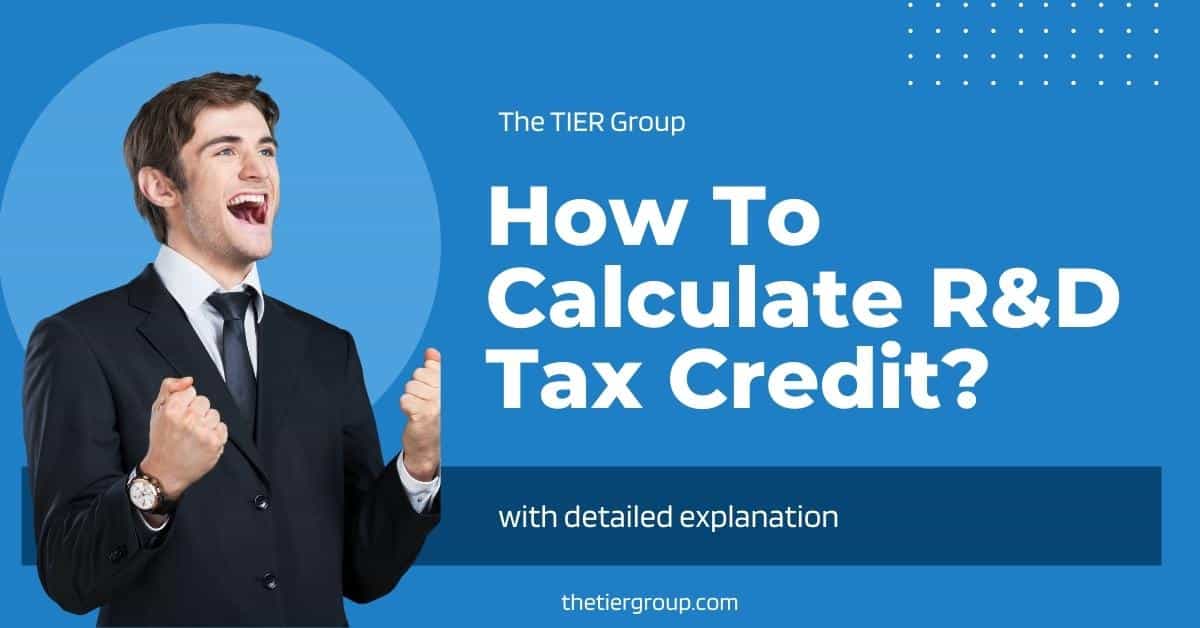
How To Calculate R&D Tax Credit?
As a business owner, you may wonder how to calculate the R&D tax credit. There are two calculation methods allowed for the federal Research & Development tax credit:
- Regular Research Credit Method (RRC)
- Alternative Simplified Credit (ASC)
Depending on the situation, businesses can choose either of them to compute their research credit numbers. They can use that amount to offset their tax liabilities.
Regular Research Credit Calculation (RRC)
This is a traditional method for calculating the R&D tax credit. Businesses can use the Regular Research Credit (RRC) as an incremental credit. It is 20% equivalent to the current year’s qualified research expenses (QRE) that exceed the base amount. Business owners must submit the average, annual R&D gross receipts of QREs spent over the prior four tax years.
Some businesses can find this method difficult to follow, especially those who have started their operations long ago. For example, if a business began its operations in 1985, they have to submit the tax information from those years.
Businesses need the following information for RRC:
- Supplies cost consumed or used during the research period
- The cost paid for external consultation
- Box 1 W2 Wages per year
Businesses must have a historical base amount and it must be exceeded to qualify for claiming the credit in the current year. They require taxable gross receipts of the prior four tax years to calculate the historical base amount.
If your company did not perform any QREs in the prior years and you don’t have gross receipts, you can submit the same information since your business started performing QREs.
How to Calculate Research & Development Tax Credit With RRC?
The following are the steps to calculate R&D tax credit with RRC:
- Calculate the total qualified research expenses for the current tax year
- Evaluate the fixed-base percentage
- Calculate the total qualified research expenses spent over the previous four years
- Evaluate the average
- Calculate the base amount by multiplying the average and the fixed base percentage
- Calculate 50% of the current taxable year’s QREs OR the greater of the base amount
- Deduce the minimum base amount from the current taxable year’s QREs
- Evaluate the 20% of the result you get through step 8
- You are eligible for this much credit
Note: Your business must qualify the following conditions to be eligible for RRC:
- The base amount must be more than 50% of the current taxable year’s QREs
- The fixed base percentage must not exceed 16% of the current taxable year’s QREs
Alternative Simplified Credit Calculation (ASC)
Taxpayers can use the Alternative Simplified Credit (ASC) for taxable years starting in 2007. It produces a smaller R&D tax credit than the Regular Research Credit (RRC). However, more businesses rely on this method because it is less complicated than the traditional R&D tax credit calculation method.
Businesses do not need gross receipts for ASC. Instead, it requires the data around the qualified research expenses over the previous 3 taxable years. You need the following data for ASC:
- Supplies cost consumed or used during the research period
- The cost paid for external consultation
- Box 1 W2 Wages per year
How to Calculate Research Tax Credit with ASC?
The following are the steps to calculate R&D tax credit with RRC:
- Calculate the total qualified research expenses from the 3 prior tax years
- Evaluate the average of total QREs from the 3 prior tax years
- Calculate 50% of the average. The result is the base amount for the current year
- Subtract the current taxable year’s QREs from the base amount
- To get the gross credit amount, multiply the result of step 4 by 14%
- This is the total amount of your credit
RRC Vs. ASC: What Should Your Company Choose?
If your business’ R&D spending is declining, you may not be eligible for research credit using the RRC. In such cases, ASC can be your best option.
Let’s take an example. Suppose your company’s research and development efforts have become more efficient in recent years. And, it ultimately resulted in lesser spending than previous years. Even though it is a good thing, it negatively impacts your company’s R&D spending ratio. As a result, your business may fail to meet the ‘base period’ conditions for RRC.
Our tax consultants suggest considering both RRC and ASC for research credit calculation. You should calculate the credit amount using both methods and choose the most beneficial one.
How Can We Help Determine R&D Tax Credit Eligibility And Filing?
Evaluating the research and development tax credit is complex. Businesses often need assistance from top-level R&D tax consultants to reap all the benefits of research credits. Looking at the calculation processes, you can understand the challenges involved.
Find out if your company qualifies for an R&D tax credit or have any doubts about the calculation methods, we can help. For more information, call us at (800) 548 – 6098.



